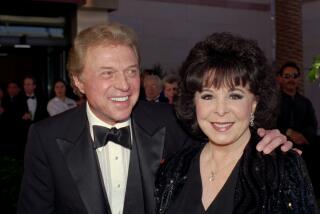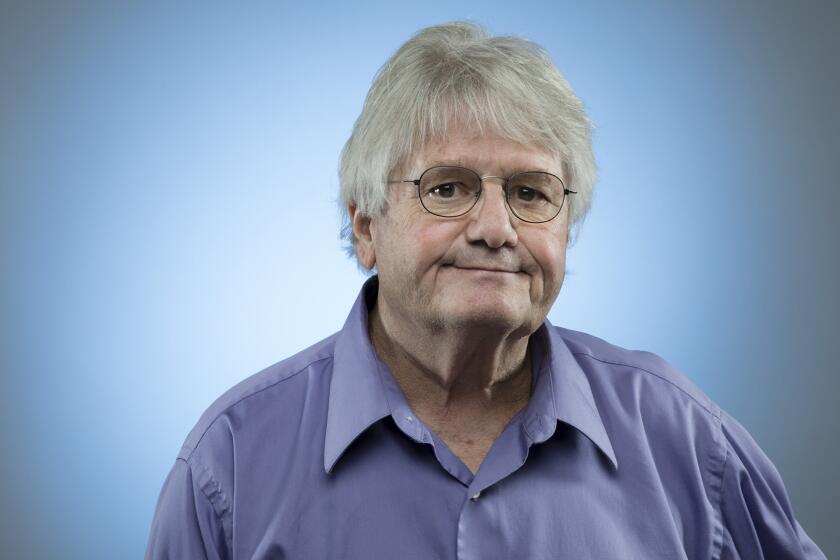PASSINGS: Fred Milano, William Polk Carey, Mike Colalillo
Fred Milano
Doo-wop singer with Dion and the Belmonts
Fred Milano, 72, a singer who made rock ‘n’ roll history on doo-wop hits with Dion and the Belmonts in the 1950s, died Sunday, three weeks after his lung cancer was diagnosed, said Warren Gradus, who joined the vocal group in 1963.
Milano lived in Massapequa, on New York’s Long Island, and died in a hospital, Gradus said.
Milano and his friends Angelo D’Aleo and Carlo Mastrangelo from the Bronx formed the Belmonts in the mid-1950s, borrowing their name from the borough’s Belmont Avenue. They became Dion and the Belmonts after lead singer Dion DiMucci joined in 1958.
They had a quick succession of hits, including “I Wonder Why,” “No One Knows” and “Teenager in Love.”
In February 1959, after a show in Clear Lake, Iowa, the band members boarded a bus for the next show instead of taking a charter plane that crashed that night, killing Buddy Holly, Ritchie Valens and the Big Bopper.
“We didn’t know what happened until 2 o’clock the next afternoon when we got to Minnesota,” Milano told the Boston Herald in 2000. “It was a shock. A heartbreaker. Then when we called home, everyone thought we were dead because that’s what had been reported on the radio.”
After DiMucci left for a solo career in 1960, the Belmonts continued to perform and record with different lineups.
In 1967 and 1973, the Belmonts briefly reunited with DiMucci, who was inducted into the Rock and Roll Hall of Fame as a solo artist in 1989.
Milano, who was born in the Bronx on Aug. 26, 1939, went back to school in middle age. He became a legal coordinator at New York’s Rikers Island jail complex, helping inmates research their cases.
William Polk Carey
Investor donated millions to business schools
William Polk Carey, 81, an entrepreneur who founded a New York-based investment management firm bearing his name and donated tens of millions of dollars to improve U.S. business schools, died Monday at a hospital in West Palm Beach, Fla. The cause was complications following a heart attack, according to a spokeswoman for his company, W.P. Carey and Co.
A resident of New York City, he was in Florida for the holidays. At the time of his death, Carey was chairman of W.P. Carey and Co., which manages a global investment portfolio totaling about $11.8 billion, according to a company statement.
Carey, who made a fortune in real estate finance, established the W.P. Carey Foundation in 1988 as the vehicle for his philanthropy. Its major gifts include $50 million in 2003 to Arizona State University, which renamed its business school the W.P. Carey School of Business; $50 million in 2006 to Johns Hopkins University in Baltimore to create the Carey School of Business; and, last April, $30 million to the University of Maryland School of Law in Baltimore, which he hoped would lead to a joint law-business degree offered by Maryland and Johns Hopkins.
Carey, a descendant of President James K. Polk, was born on May 11, 1930, in Baltimore. He earned a bachelor’s degree in economics in 1953 at the University of Pennsylvania.
After serving in the Air Force, he began building a career in finance. He formed W.P. Carey in 1973 with his brother, Francis, and a brother-in-law, Raymond S. Clark.
Mike Colalillo
Congressional Medal of Honor recipient
Mike Colalillo, 86, a Congressional Medal of Honor recipient, died Friday at a nursing home in Duluth, Minn., according to the Dougherty Funeral Home. No cause was given.
Colalillo was awarded the nation’s highest military honor for bravery in combat for killing or wounding 25 Germans and helping a seriously wounded comrade to safety during a fierce firefight near Untergriesheim, Germany, on April 7, 1945, toward the end of World War II.
According to the official citation, the private first class was pinned down with other members of his company. The rifleman stood up amid heavy artillery, mortar and machine-gun fire, shouted to the company to follow, and ran forward while firing his machine pistol.
When his pistol was disabled by shrapnel, Colalillo climbed onto a friendly tank and manned its machine gun. And, according to the citation, as “bullets rattled about him, [he] fired at an enemy emplacement with such devastating accuracy that he killed or wounded at least 10 hostile soldiers and destroyed their machine gun.”
After that gun jammed, he borrowed a submachine gun from the tank crew and continued the attack on foot. When his company was ordered to withdraw, Colalillo remained behind to help a wounded soldier cross “several hundred yards of open terrain rocked by an intense enemy artillery and mortar barrage,” the citation said.
“What he told us,” said his daughter, Michelle Schneeberger, “was that it happened so fast that he didn’t realize what he was doing. He just did it because it had to be done.”
Colalillo was born Dec. 1, 1925, in Hibbing, Minn. After the war, he worked as a laborer for an iron company and as a longshoreman.
— Los Angeles Times wire reports
More to Read
Start your day right
Sign up for Essential California for the L.A. Times biggest news, features and recommendations in your inbox six days a week.
You may occasionally receive promotional content from the Los Angeles Times.






